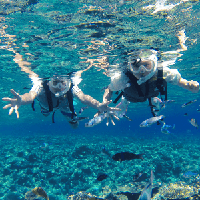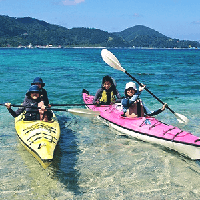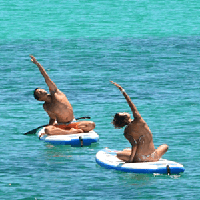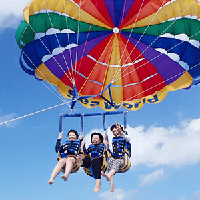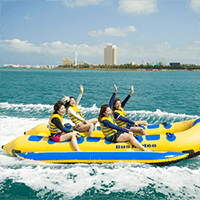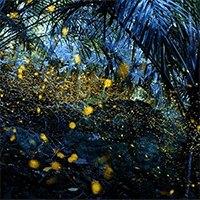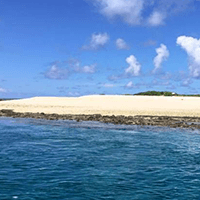Kansai in Guided tour
- Age 1~Age 70
- Over 6 hours on the day
- 07:20
07:20 Meet at Exit 2 of Nihonbashi 09:50 ▼Ine Funaya ~ "Venice of Japan" "The most beautiful village by the sea" ~ |Ine Town |Funaya Hiyori | INE COFFEE (about 40 minutes, walk or ride, ride fare at own expense) 11:10 ▼One of the Three Most Scenic Views of Japan "Amanohashidate Observatory" |Chion-ji Temple, Monju-do (Temple for academic success) |Walk and play in the sea (about 2 hours including lunch, expenses at own expense) 14:40 ▼Kyoto Gassho Village ~ Miyama Kayabuki-no-Sato (about 40 minutes, free time) |Let's go to the most beautiful photo spot─the little red postbox |Miyama milk and Miyama ice cream are not to be missed in Miyama 15:20 After a fun day of tour, we headed home. 17:20 Shinsaibashi, Dotonbori area (about 1 hour, free time) [Ine Town] was chosen by the Japanese as one of "18 Most Beautiful Towns in Japan". There are Japanese-style floating boat lodges, where you can experience the original ecological landscape that you cannot experience in tourist spots. About 230 boat lodges are lined up along about 5 kilometers of the south-facing coast of Ine Bay. Currently, it is the town with the largest number of old boat houses remaining in Japan. The people who live in the boat houses still coexist with the sea in front of them. [Amanohashidate] "Amanohashidate" in Miyazu Bay facing the Sea of Japan is one of the special scenic spots known as "Japan's Three Views" along with "Matsushima" in Mutsu and "Miyajima" in Aki. [Miyama Kayabuki-no-Sato] is known as one of Japan's three major remaining thatched roof villages along with Shirakawa-go Gassho Village in Gifu Prefecture and Ouchi-juku in Fukushima Prefecture. Recommended sightseeing spots for free strolls: Funaya Weather - Enjoy the beautiful scenery of Ine Bay while drinking coffee (closed on Wednesdays, free time in Ine Town) Please be careful if you have time to ride a sightseeing boat: There are many eagles living around Ine Funaya, so please be careful when riding a sightseeing boat. If you see an eagle, please stop feeding the seagulls immediately and put away any food you are holding to avoid being pecked by the eagle. This is a shared tour and participants come from all over the world.
- Age 1~Age 70
- Over 6 hours on the day
- 10:30
10:30▼Board and disembark at the meeting point, Nihonbashi Station Exit 2 (Namba-Shinsaibashi area)12:00▼Mosaic Ferris Wheel at Kobe Port (free time to explore, lunch on your own/approximately 2.5 hours)14:30▼Kitano Ijinkan-gai (approximately 1 hour)16:30▼Arima Onsen (free time to explore/approximately 1.5 hours)18:00▼Mt. Rokko night view (approximately 1.5 hours)19:30▼Return to Osaka city and disband in the Shinsaibashi/Dotonbori area/drop off at your hotel in Osaka city, where the tour ends. 20:30▼The day's itinerary ends happily! This is a mixed tour, and participants come from all over the world.
- Age 6~Age 100
- Within 1 hour
Elevator descends to the marine cavern spreading 36 meters underground. Please enjoy dynamic landscape, mystery of the thousand and history romance.
- Age 1~Age 70
- Over 6 hours on the day
- 08:40 / 09:50
[07:30-08:30] Hotel transfer within the Osaka Loop Line [08:40] Boarding and disembarking at the meeting point, Nihonbashi Station Exit 2 (Namba-Shinsaibashi area) [09:50] Boarding and disembarking at the meeting point, Kyoto Station Hachijo Exit (in front of Seven-Eleven) [10:50] ▼Miho Museum: Pei's Paradise (about 2 hours, free time including lunch, at own expense) (Closed: March 24th, 31st, 2025, April 7th, 14th, 21st, 28th, May 7th, 12th, 19th, 26th, June 2nd, June 9th - July 11th, July 14th, 22nd, 28th, August 4th, 12th, 18th, August 25th - September 19th, September 22nd, 29th, October 6th, 14th, 20th, 27th, November 4th, 10th, 17th, 25th, December 8th, December 15th - 31st) Opening days: Omihachiman Hachimanbori, not Miho Museum ▼Omihachiman Hachimanbori Experience traditional Japanese architecture along the moat A canal tour with atmosphere and history (about 2 hours, including lunch and free time)Miho Museum is closed. Instead of Miho Museum, we will go to Omihachiman Hachimanbori. [13:50] ▼Kyu-Chikurin-in - Reflection like Ruriko-in (about 60 minutes)|▼Hieizan Hiyoshi Taisha - Head shrine of more than 3,800 Hie Shrines, Hiyoshi Shrines, and Sanno Shrines throughout Japan. Monkeys are messengers of the gods. (Approximately 60 minutes, go when the old bamboo forest is closed. Do not enter the old bamboo forest)|Sanno Torii [15:20] ▼Lake Biwa - Shirahige Shrine - Torii in the lake (about 30 minutes) [16:00] ▼After a fun day of sightseeing, we start to head back. [19:00] ▼Shinsaibashi, Dotonbori area (free time / about 1 hour)Guests can play in the Shinsaibashi area of Osaka for about 1 hour. After you're done playing, passengers who have chosen to board and disembark at the meeting point will disband in the Shinsaibashi area. ▼For opening days, please check the Miho Museum official website: http://www.miho.or.jp/calendar/ Permanent exhibition admission fee: 1,100 yen, special exhibition admission ticket: 1,300 yen ▼Ancient bamboo forest admission fee: 330 yen Tasting matcha and Japanese sweets in the garden: 400 yen Closed: Mondays (closed on public holidays), the day after public holidays, December 26th to 31st The Japan tour is a mixed tour, and participants come from all over the world.
- Age 1~Age 70
- Over 6 hours on the day
- 09:30
09:30-11:00 ▼Pick up/drop off/drop off at hotel/private inn; we will not wait if the time is over, so we recommend that you wait at the meeting point 10 minutes before departure. 12:00 ▼Kobe Port/Mosaic Ferris Wheel (free walk/lunch on your own/approx. 2.5 hours) Kobe is a trading port with a 140-year history as one of the world's leading international ports. It flourished as a foreign settlement during the Meiji period, and many of its exotic buildings remain today, making it popular with tourists as they are photogenic for social media. Kobe landmarks such as the Port Tower, Mosaic Ferris Wheel, and the large shopping mall umie stand side by side. Take a leisurely stroll along the sea while feeling the sea breeze. 14:30 ▼Kitano Ijinkan-gai (approx. 1 hour) Since the opening of Kobe Port, many foreigners have lived here since the Meiji period, and the Kitano Ijinkan-gai is characterized by its streets that still convey the atmosphere of the Meiji period. On a hill overlooking the sea, there are many public foreign-style houses, including the "Kazamidori no Yakata" (Weathercock House), a national important cultural property with a weathercock on the roof as its symbol, and the "Moegi no Yakata" (Moegi House), the residence of former U.S. Consul General Hunter Sharp, where you can experience exotic culture and history. The Kitano area of Kobe, which is crowded with tourists, is full of wonderful shops. Kitano, which is full of exotic atmosphere and harmony, is full of discoveries that will make you want to return again and again. 16:30 ▼Arima Onsen (free stroll / about 1.5 hours) Arima Onsen, the inner sanctum of Kansai, loved by Toyotomi Hideyoshi, is one of the three oldest hot springs in Japan. It has been loved by many literary figures and celebrities, and even today the hot spring town is full of old-fashioned atmosphere. You can enjoy the different spring qualities of Arima's specialty "Kinsen", a brown-colored hot spring containing iron and salt, and the colorless and transparent "Ginsen", which is popular with women as it makes your skin smooth. There are two public outdoor baths, Kin no Yu (gold spring) and Gin no Yu (silver spring). There are also inns that offer day-trip bathing, and Arima Onsen Taiko no Yu, a hot spring theme park with 24 types of baths. We recommend touring the seven springs, including Tenjinsengen, which emits white smoke from the central chimney while making a gurgling sound. 18:00 ▼ Night view of Mt. Rokko (about 1.5 hours) Mt. Rokko is located in the southeast of Hyogo Prefecture. Its international history, excellent hiking trails, and stunning views of Kobe and Osaka make it one of the prefecture's main tourist destinations. On top of Mt. Rokko, there are observation spots where you can see the cities of Kobe and Osaka, and the panoramic view is breathtaking! There are also plenty of spots where you can enjoy delicious food and drinks while looking at the beautiful night view, so you can enjoy Kobe with both your eyes and your tongue. 19:30 ▼ The tour ends. 20:30 ▼ The day's itinerary ends happily! This is a shared tour and participants come from all over the world.
- Age 1~Age 70
- Over 6 hours on the day
- 07:30
[07:30-08:30] Pick-up/drop-off/transfer to hotel/private inn Hotels/private inns within the Osaka Loop Line [10:00] ▼Kiyomizu-dera area (individual worship, free stroll, free lunch/approx. 3 hours) [13:30] ▼Fushimi Inari Taisha (individual worship, free stroll/approx. 70 minutes) [15:30] ▼Nara Park (individual worship, free stroll/approx. 1.5 hours) [17:00] ▼After a fun day of sightseeing, start heading back. [18:00] ▼Pick-up/drop-off/transfer to hotel/private inn. Recommended sightseeing courses for hotels and guesthouses within the Osaka Loop Line Course 1: Kiyomizu-dera Temple (Customers are responsible for admission fees.) - Ni, Sannenzaka - Ishibekoji - Gion · Hanamikoji-dori - Yasaka Shrine You can visit your favorite spots according to your physical strength and time ~ Course 2: Kimono experience (Customers who are interested can wear a kimono and enjoy the old townscape and tour Kiyomizu-dera Temple. Let's take pictures of the wonderful moment.) (There are many kimono shops near Kiyomizu-dera Temple and Fushimi Inari Taisha Shrine. We recommend renting a kimono at a shop in Kiyomizu-dera Temple and returning it at a shop in Fushimi Inari Taisha Shrine. Fees are borne by the customer.) Course 3: "Nara Park" where "deer and autumn leaves" are woven together The contrast between the autumn leaves and evergreen trees is vivid Course 4: Todai-ji Temple (Customers are responsible for admission fees.) Todai-ji Temple was built during the Nara period. Nara is popular with tourists and once served as the capital of Japan. It is registered as a UNESCO World Heritage Site as one of the "Historic Monuments of Ancient Nara". Todaiji Temple has eight national treasure buildings, 14 buildings (24 national treasure Buddha statues), and nine other national treasures such as paintings and books. The famous Great Buddha, the Great South Gate, and the Kongorikishi standing statues are all national treasures, as are the Hokke-do Hall, the buildings, and the Buddha statues enshrined within. There are few places in Japan where you can see so many national treasures at once. Admission fees: Todaiji Great Buddha Hall: Adults (junior high school students and above) 600 yen, elementary school students 300 yen; Great Buddha Hall and Todaiji Museum: Adults (junior high school students and above) 1000 yen, elementary school students 400 yenThis is a mixed tour, and participants will come from all over the world.
- Age 1~Age 70
- Over 6 hours on the day
- 10:30
Get on and off at the meeting point08:40 ▼Nihonbashi Station, Exit 2 (Namba-Shinsaibashi area)Note: 01/12-4/12: Meeting time: 09:4009:50 ▼Kyoto Station, Hachijo Exit (in front of 7-Eleven)07:30-08:30 ▼Pick up/drop off/pick up at hotel/private lodging, hotel/private lodging within Osaka Loop Line12:00 ▼Kobe-Sanda Premium Outlets (free time to explore/lunch on your own/about 4 hours) (does not visit Kitano Ijinkan-gai and Kobe Port)There are many outlet malls in the Kansai area, which includes Osaka and Kyoto, two of Japan's leading tourist destinations. Among them, Kobe-Sanda Premium Outlets, the largest in western Japan, has more than 200 stores, mainly selling domestic and international luxury brands. Kobe-Sanda Premium Outlets, which is modeled after the upscale residential area "Pasadena" on the outskirts of Los Angeles, is lined with about 210 stores from famous domestic and international brands, including luxury brands, popular select shops, and other interior, sports, miscellaneous goods, and restaurants, allowing you to enjoy shopping all day in an extraordinary space. There is a park inside the facility, so if you get tired of shopping, you can take a break while looking at the Akashi Strait. Kobe-Sanda Premium Outlets is also famous as a facility where you can shop without getting wet in the rain. It is a spot where you can enjoy yourself to the fullest, with a customer-first attitude. *Present your passport at the information center to receive a discount coupon. 16:30 ▼Arima Onsen (free stroll / about 1.5 hours) Arima Onsen, the inner sanctum of Kansai, loved by Toyotomi Hideyoshi, is one of Japan's three oldest hot springs. It has been loved by many literary figures and celebrities, and even today the hot spring town is full of traditional atmosphere. You can enjoy different springs, including the brown Arima specialty "Kinsen" that contains iron and salt, and the colorless and transparent "Ginsen" that is popular among women for making their skin smooth. There are two public outdoor baths, Kin no Yu (Kinsen) and Gin no Yu (Ginsen). There are also ryokans that offer day-trip bathing, and Arima Onsen Taiko no Yu, a hot spring theme park with 24 types of baths. We recommend touring the seven springs, including Tenjinsen, which emits white smoke from the central chimney while making a gurgling sound. 18:00 ▼Mt. Rokko Night View (about 1.5 hours) Mt. Rokko, selected as one of the "New Top Three Night View Cities in Japan", is located in the southeast of Hyogo Prefecture. Its international history, excellent hiking trails, and stunning views of Kobe and Osaka make it one of the prefecture's main tourist destinations. There are observation spots dotted on the top of Mt. Rokko where you can see the cities of Kobe and Osaka, and the panoramic views are breathtaking! There are plenty of spots where you can enjoy delicious food and alcohol while watching the beautiful night view, so you can enjoy Kobe with both your eyes and your tongue. 19:30 ▼ Return to Osaka city and disband in the Shinsaibashi/Dotonbori area / Drop off at your hotel in Osaka city and the tour will end. 20:30 ▼ The day's itinerary ends happily! This is a mixed tour, and participants come from all over the world.
- Age 1~Age 70
- Over 6 hours on the day
- 08:40 / 09:50
[08:40] Exit 2 of Nihonbashi (towards Namba-Shinsaibashi) [09:50] Kyoto Station Hachijo Exit, sightseeing bus parking lot [10:30] ▼ Sanzenin Temple (approx. 120 minutes, free time, including lunch, please pay your own expenses) [13:30] ▼ Arashiyama (approx. 3 hours, free time) [16:30] We finished our day's tour with a lot of fun and headed home. [17:50] Shinsaibashi/Dotonbori area (approx. 1 hour, free time) Recommended restaurants near Sanzenin Temple: Keibisakan mainly serves soba, tofu dishes, and creative cuisine. Ippukuchaya Main menu: Udon, soba, bowls Ryokawachaya Main menu: Udon, yuba dishes Shinomatsumon mainly serves Kyoto cuisine, tofu dishes, and yuba dishes. Recommended route in Arashiyama (at your own expense. We recommend you choose a tour)1. Sagano train (recommended route: Sagano - Kameoka Station - Sagano)Travel period: March 1st to December 29th (trains do not operate in January and February due to winter maintenance)Closed: Wednesdays (train ticket price is not included, must be purchased separately)Cherry blossom season and autumn leaves season (Arashiyama train, operation date undecided) 1 train 30 seats2. Sagano Bamboo Forest PathSagano Bamboo Forest is located in Arashiyama. The bamboo forest path is about 500 meters long. Pass Nonomiya Shrine and head towards Okawachi Sanso to reach the Arashiyama Bamboo Forest. Walking through the bamboo forest, you can hear the natural sound of the wind blowing through the bamboo leaves. This sound has also been selected as one of the "100 Sounds of Japan that Should Be Preserved". This is also where Ang Lee shot Crouching Tiger, Hidden Dragon. Tenryu-ji Temple on the trail offers a spectacular view of a Japanese garden. The Arashiyama Lantern Festival, held every December, illuminates the bamboo forest and Togetsukyo Bridge with dazzling lights, creating a wintery sight. This is a shared tour, and participants come from all over the world.
- Age 1~Age 70
- Over 6 hours on the day
- 08:40 / 09:50
[08:40] ▼Nihonbashi Station, Exit 2 (Namba-Shinsaibashi area) [09:50] ▼Kyoto Station, Hachijo Exit (in front of 7-Eleven) [10:00] ▼Kiyomizu-dera area (individuals can visit the shrine, stroll around freely, and have lunch at their leisure / approx. 3 hours) [13:30] ▼Fushimi Inari Taisha Shrine (individuals can visit the shrine, stroll around freely / approx. 70 minutes) [15:30] ▼Nara Park (individuals can visit the shrine, stroll around freely / approx. 1.5 hours) [17:00] ▼After a fun day's sightseeing, we start to head back. [18:00] ▼Shinsaibashi, Dotonbori area (free time/about 1 hour) Recommended sightseeing course Course 1: Kiyomizu-dera Temple (customer pays admission fee) -Ninen-zaka -Ishibekoji -Gion·Hanamikoji-dori -Yasaka Shrine You can visit your favorite spots according to your physical strength and time~Course 2: Kimono experience (Customers who are interested can wear a kimono and enjoy the old townscape and touring Kiyomizu-dera Temple. Let's take pictures of the wonderful moment.) (There are many kimono shops near Kiyomizu-dera Temple and Fushimi Inari Taisha Shrine. We recommend renting a kimono at a shop in Kiyomizu-dera Temple and returning it at a shop in Fushimi Inari Taisha Shrine. Customers are responsible for the fee.) Course 3: "Nara Park" where "deer and autumn leaves" are woven together The contrast between the autumn leaves and evergreen trees is vivid Course 4: Todai-ji Temple (customer pays admission fee) Todai-ji Temple was built in the Nara period. Nara is popular with tourists and once served as the capital of Japan. It is registered as a UNESCO World Heritage Site as one of the "Historic Monuments of Ancient Nara". Todaiji Temple has eight national treasure buildings, 14 buildings with 24 national treasure Buddhas, and nine other national treasures such as paintings and books. The famous Great Buddha, the Great South Gate, the Kongorikishi standing statues, and the Hokke-do Hall, as well as the Buddha statues enshrined therein, are all national treasures. There are few places in Japan where you can see so many national treasures at once. Admission fees: Todaiji Great Buddha Hall: Adults (junior high school students and above) 600 yen, elementary school students 300 yen; Great Buddha Hall and Todaiji Museum: Adults (junior high school students and above) 1000 yen, elementary school students 400 yen This is a mixed tour, and participants will come from all over the world.
- Age 20~Age 99
- 2~3 hours /3~4 hours
- 13:00
Blessed with an abundance of underground water veins that spring up from the Momoyama Hills, Fushimi was once called "Fushimizu" (literally "fushimizu" in Japanese), and it is said that full-scale brewing began here about 400 years ago because the water was suitable for sake brewing. It flourished as a castle town and a port on the Yodo River on the Tokaido, and sake breweries with white walls stand out along the Uji River and canals. The streets of Fushimi, where you can enjoy the atmosphere of a sake brewing town, with ten-koku boats sailing among swaying willows, have been designated as the "Fushimi Minamihama Neighborhood Landscape Development District" by Kyoto City. ~Time Schedule~13:00 [Meet at the north ticket gate of Keihan Electric Railway Nakashojima Station] Meet in front of the sake barrel object located immediately after exiting the north ticket gate! This is where the tour begins! It's a flat road, but you'll be walking about 2 kilometers, so please wear comfortable shoes on the day. 13:15 [Gekkeikan Okura Sake Museum] ☆Three types of sake tastings, including Daiginjo, and a special Gekkeikan sake cup included☆The building is a wooden storehouse built in the Meiji era that is still in use. You can drink the underground water used in sake brewing from the well in the courtyard. Just like Fushimi sake, it is very soft and delicious, so please try it. You will be surprised at how soft it is. In the exhibition room, you can see traditional sake brewing tools, which are designated as tangible folk cultural properties of Kyoto City. 13:50 [Fushimi Yume Hyakushu] ☆Winter limited sake ice cream included☆Shop & cafe "Fushimi Yume Hyakushu". In fact, this building is the former main store of Gekkeikan, built in the Taisho era. In addition to Gekkeikan, various Kyoto sakes and souvenirs are sold in the store. We have prepared a 3-type sake tasting set including appetizers here. 14:30 [Kizakura Kappa Country] ☆Kyoto's oldest local beer included☆ Kiizakura is famous for its sake commercials using kappa characters, but it is also the first company to make local beer in Kyoto. Therefore, in addition to the sake manufacturing process, Fushimizugura is characterized by the fact that you can tour the beer factory. After the tour, try tasting sake and beer in the lovely courtyard. 15:15 [Aburacho] ☆Authentic sake tasting set of three types☆ We have more than 80 types of sake from all 18 breweries in Fushimi, mainly ginjo sake and daiginjo sake, and more than 100 types including seasonal limited edition sake. In addition, at the sake tasting counter attached to the store, you can compare three types in small cup size as well as a glass. Just looking at the bottles will make you feel happy.
- Age 6~Age 70
- 1~2 hours
- 11:00 / 14:00 / 17:00 / 20:00
Osaka no Jin ⚔ Pilgrimage to sacred places refers to the stages of battles such as the 1614 (Keicho 19) battle "Osaka Winter Jin" and the 1615 (Genna 1) restarted battle "Osaka Summer Jin" and other battles. It is to visit places connected to Osaka Castle as sacred places with “SAMURAI STYLE”. In addition, the term ``Japan's best soldier, who acted with great courage and speed'' in that battle was a name used to praise Sanada Nobushige (Yukimura), who was loyal to his lord, did not betray him even with money or territory, and was close to Tokugawa Ieyasu during the Summer Siege in Osaka. . Yukimura Sanada shined dazzlingly as a Sengoku military commander in the battle that concluded the Sengoku period. His vivid life still fascinates many people today, and let's make a pilgrimage to the sacred place of his glorious battle at Osaka, where he was praised as ``the greatest soldier in Japan.''
- Age 6~Age 70
- 1~2 hours
- 11:00 / 14:00 / 17:00 / 20:00
Osaka no Jin ⚔ Pilgrimage to sacred places refers to the stages of battles such as the 1614 (Keicho 19) battle "Osaka Winter Jin" and the 1615 (Genna 1) restarted battle "Osaka Summer Jin" and other battles. It is to visit places connected to Osaka Castle as sacred places with “SAMURAI STYLE”. In addition, the term ``Japan's best soldier, who acted with great courage and speed'' in that battle was a name used to praise Sanada Nobushige (Yukimura), who was loyal to his lord, did not betray him even with money or territory, and was close to Tokugawa Ieyasu during the Summer Siege in Osaka. . Yukimura Sanada shined dazzlingly as a Sengoku military commander in the battle that concluded the Sengoku period. His vivid life still fascinates many people today, and let's make a pilgrimage to the sacred place of his glorious battle at Osaka, where he was praised as ``the greatest soldier in Japan.''
- Age 0~Age 100
- 1~2 hours
- 07:00 / 08:00 / 09:00 / 10:00 / 11:00 / 12:00
Katsuura was once a bustling town with tuna boats coming and going and a tourism boom in the Showa era. On this tour, you will walk with a local guide, tracing the town's story that has continued since the early Showa era. Why not visit the guide's favorite delicious restaurants and get a feel for the daily life we live in this town today through interactions with the locals? The charm of Katsuura can only be seen by touring with a guide. Through this trip, we will share the town's story and provide you with a special experience that will make you want to return.
- Age 18~Age 100
- 2~3 hours
This is a two-hour tour where you can sing and drink as much as you like at a karaoke bar. This tour takes you to a snack bar, which is a part of Japanese culture that many people would not be able to venture into during their travels, and allows you to sing karaoke as much as you like. Interacting with local customers is also one of the attractions of this tour. Let's enjoy this rainy day activity together in the spare time after outdoor sightseeing during the day. English is available, so you can participate with peace of mind. If you would like to experience a local meal before karaoke, we can accommodate you upon separate request.
- Age 10~Age 70
- 2~3 hours
- 10:00 / 14:00 / 17:00 / 20:00
One of them is Aoyamon. The gate in the square there is called Aoyamon.↓3-Gokurakubashi" as a bridge to the Paradise↓4-The place where Toyotomi Hideyori and Yododono took their lives During the Osaka Summer Battle, Toyotomi Hideyori, the lord of Osaka Castle, and his mother, Yodo-dono, committed suicide immediately after the castle fell.A monument that is believed to be the place of their suicide is located in this vicinity.↓5-Osaka Castle Main TowerOsaka Castle is the most difficult castle to attack, built by Toyotomi Hideyoshi, who aimed to unify the country.Note: Entry into the castle keep is not included.↓6-Japanese garden↓7-Sakuramon Gate↓8-South Outer Moat↓9-Hokoku ShrineThis shrine is located in front of Osaka Castle's Sakura Gate and is dedicated to Lord Toyotomi Hid↓-End point
- Age 13~Age 65
- 5~6 hours
- 09:30
This tour is an adventure tour that combines the mysterious world of Shugendo with the thrill of cave exploration. There are many caves and waterfalls in the Yoshino region of Nara Prefecture, and it has long been considered a sacred place for people who practice asceticism in the mountains. You can experience the beauty of nature and the depth of history by visiting the waterfalls and caves where ancient ascetics practiced. In particular, by exploring inside a cave, you can experience the sensation of entering the womb of the earth with all five senses, touch the mysteries of nature, and refresh your mind and body while being surrounded by a ``silent and mysterious'' atmosphere. **What is Shugendo? **Shugendo is a unique religious culture that incorporates elements of Buddhism and Shintoism into traditional Japanese ascetic practices, and values a sense of unity with nature. Mountains are considered sacred places, and asceticism is carried out in nature. Ascetics are called ``Yamabushi'' and aim for spiritual growth through meditation, waterfall training (asceticism where you are hit by a waterfall), asceticism in caves, etc. Shugendo, born from gratitude for being alive amidst the blessings of nature, is based on the idea that one can be reborn once again through rigorous training in nature. Caves have also been used as training sites. 1. **Arrival at Yoiyoi Nishikawa Base and Briefing**: - After arriving at Yoiyoi Nishikawa Base, you will receive a briefing on the tour overview, safety, and the cultural significance of the places you will visit. 2. **Introduction to Dragonfly Falls Hike**: - Visit Dragonfly Falls, which was also a training site for Shugendo, located a one-minute drive from Yoiyoi Nishikawa Base. Here, you will experience the training of Shugendo and how to face nature, including waterfalls. 3. **Lunch Break**: Have lunch at the park below Dragonfly Falls 4. **Preparing for Expedition**: - Return to Yoiyoi Nishikawa Base and prepare your exploration gear. Once you are ready, you will drive in your guide's car for about 15 minutes to the parking lot near the cave. 5. **Start of cave exploration**: - After arriving at the parking lot, the cave exploration will begin. The exploration begins by searching for the entrance of the cave. Please discover the cave with your own hands. In order to enjoy the cave exploration empty-handed, your luggage will be left in the car and your guide will take care of your valuables other than your smartphone. 6. **Cave exploration**:7. **Response after cave exploration**: - Return to the same parking lot and change from your dirty equipment. 8. **Hot spring bath**: - After the cave exploration, you can enjoy a hot spring bath. We will provide face towels. Please spend some time relaxing and soothing your tired body in the hot spring. 9. **Pick-up and disbandment**:
- Age 13~Age 80
- Over 6 hours on the day
- 08:50
Welcome to KYOTO, Japan!Let's dive into and discover Kyoto's kaleidoscope of sights and sounds.Explore as many as 12 attractions in the city on this full day tour.We take you to the must-see sights and also show you the hidden gems of each location.Let's stroll the city on foot and by metro like a local for the day.Transportation and the street in the area are very complicated, even for the Japanese.However, all guide ours were born and raised in Japan, have lived for a long time close to the area, and are well-trained expert locals.So, we can take you to so many places, at the best time, within a limited timeframe.We recommend you join our tour on your first day in Tokyo. Because, you can learn not only about sights, but also about Japanese history, culture, society, ways of thinking, values and even about local etiquette, how to take public transportations, our everyday life.But above all, the best part of traveling is good food.JR Saga-Arashiyama station at 8:50Arashiyama, Randen Tram Line, Ryoan-ji Temple, Sushi-go-round(lunch, Ramen, Kara-Age, Beer), Kinkakuji Temple, Fushimi Inari Shrine, Kiyomizu-zaka slope, Kiyomizu Temple, Sanneizaka, Yasaka Pagoda, Gion area, Gion shopping street
- Age 12~Age 80
- 3~4 hours
- 09:00 / 13:00
This is a guided cycling tour around the area around Omi Ohashi Bridge and Seta River. A local guide will show you the sights that can only be seen by cycling. Please make your mind and body well by cycling around Lake Biwa. Rental bicycles and helmets are included. Please join us empty-handed. This course is centered around the flat and easy-to-ride areas in the southernmost part of Lake Biwa, and is enjoyable even for beginners. This tour is guided cycling, so you can easily experience a tour led by a cycling guide. We will introduce the attractive and slightly maniacal spots scattered around the course with explanations from the guide. Main stopover spots: Omi Ohashi Bridge, Sunshine Beach, Zeze Castle Ruins Park, Seta Karahashi Bridge, Takebe Taisha Shrine, Biwako Culture Park Morning session 9:00, afternoon session 13:00 Target age 12 years old and over (height 145 cm or more) Applications can be made from one person, but the tour will be conducted with two people or more. If there are less than two people, the tour will not be conducted. If the number of people in your reservation is less than two even after your reservation is confirmed, your reservation will be canceled and you will not be able to participate in the tour. Please note that your reservation may be canceled after it has been confirmed. If the tour is canceled (your reservation is canceled), your reservation will be canceled by 6:00 p.m. the day before.
最近チェックしたプラン
Please wait a moment
![[Amanohashidate] Ine Funaya & Kyoto Gassho Village Miyama Thatched House Day Tour | Departing from Osakaの画像](https://img.activityjapan.com/10/56281/10000005628101_KGckTMmm_3.jpg?version=1730786645)
![[Day trip] Kobe night view and city sightseeing: Have a wonderful night!の画像](https://img.activityjapan.com/10/55503/10000005550301_P3BiVCAd_3.jpg?version=1733821862)
![[Wakayama/Shirahama] An experience where you can meet nature and history! A sea cave exploration tour that spreads 36 meters underground! !の画像](https://img.activityjapan.com/10/46749/10000004674901_1vsuVU1u_3.jpg?version=1676097908)
![[Day trip/Pick-up from city hotels] Miho Museum | Omihachiman | Former Bamboo Forest Garden | Hieizan Hiyoshi Taisha Shrine | Lake Biwa | Water Torii of Shirasu Shrineの画像](https://img.activityjapan.com/10/55718/10000005571801_1dhWswak_3.jpg?version=1744171925)
![[Pick-up from city hotels] Kobe night view and city sightseeing: Have a wonderful night!の画像](https://img.activityjapan.com/10/55624/10000005562401_P3BiVCAd_3.jpg?version=1735094942)
![[13-person team/Pick-up from city hotels] Kyoto, Nara, Kiyomizu-dera Temple, Kimono experience, Yasaka Shrine, Fushimi Inari Taisha Shrine, Nara Parkの画像](https://img.activityjapan.com/10/55578/10000005557801_P3BiVCAd_3.jpg?version=1722496202)
![[Day trip/Pick-up from city hotels] Kobe night view and outlets: Have a wonderful night!の画像](https://img.activityjapan.com/10/55492/10000005549201_P3BiVCAd_3.jpg?version=1733822043)
![[Day trip/Pick-up from city hotels] Kyoto, Arashiyama trolley train, Sanzen-in Templeの画像](https://img.activityjapan.com/10/55488/10000005548801_P3BiVCAd_3.jpg?version=1744016286)
![[Day Trip] Kyoto, Nara, Kiyomizu-dera Temple, Kimono Experience, Yasaka Shrine, Fushimi Inari Taisha Shrine, Nara Park, Todaiji Temple Day Trip (Departing from Osaka/Kyoto)の画像](https://img.activityjapan.com/10/55460/10000005546001_P3BiVCAd_3.jpg?version=1730786226)

![[Osaka/Tamatsukuri] Osaka no Jin "Hinomoto's No. 1 Soldier" pilgrimage tour guide (Tamatsukuri area)の画像](https://img.activityjapan.com/10/52625/10000005262501_xEnFGyJR_3.jpg?version=1706264164)
![[Osaka/Tennoji] Osaka no Jin "Hinomoto's No. 1 Soldier" pilgrimage tour guide (Tennoji area)の画像](https://img.activityjapan.com/10/52569/10000005256901_xEnFGyJR_3.jpg?version=1706258885)
![[Wakayama Prefecture, Nachikatsuura] Timeless Katsuura Town Walking Food Tour (Private Tour)の画像](https://img.activityjapan.com/10/58338/10000005833801_yNY2bOqK_3.jpg?version=1742283304)
![[Osaka・Osaka Castle] Night activities & Japanese culture Enjoy even on rainy days! 2 minutes from the station! Karaoke snack bar experienceの画像](https://img.activityjapan.com/10/57295/10000005729501_ntZ3nnUe_3.jpg?version=1735272304)
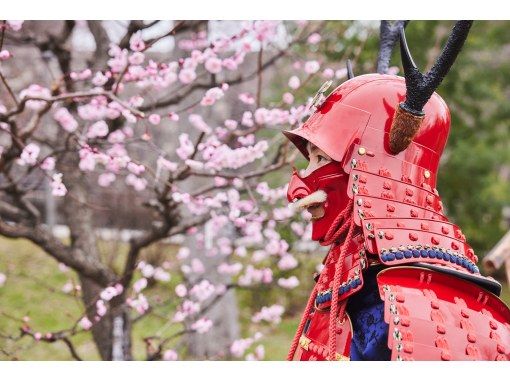
![[Nara, Yoshino] Cave Adventures: Discover the Mystical Paths of Shugenの画像](https://img.activityjapan.com/10/56866/10000005686601_8OUZBun9_3.JPG?version=1733231762)
![[Kyoto] Complete Kyoto Tour in One Day, Explore All 12 Popular Sights!の画像](https://img.activityjapan.com/10/52322/10000005232201_z8QiQozH_3.jpg?version=1703416682)
![[Shiga/Otsu] Guided cycling tour of Lake Biwa and the Seta Riverの画像](https://img.activityjapan.com/10/57227/10000005722701_ntZ3nnUe_3.JPG?version=1734575585)
